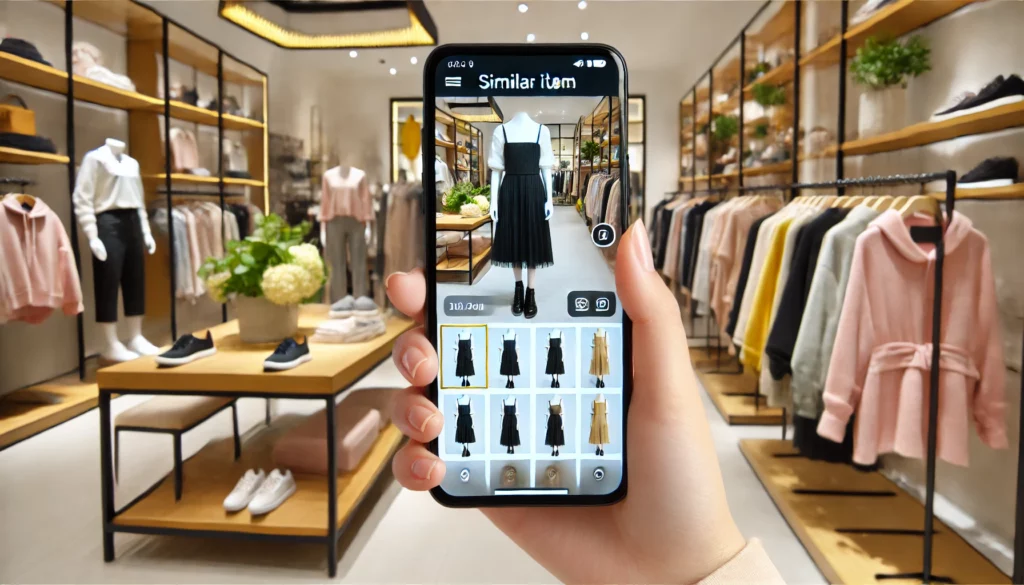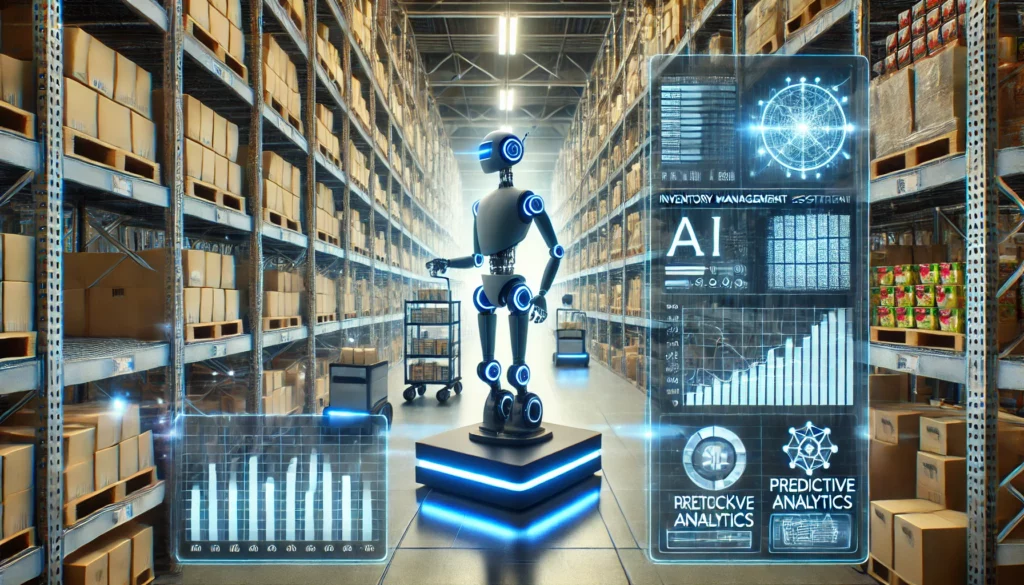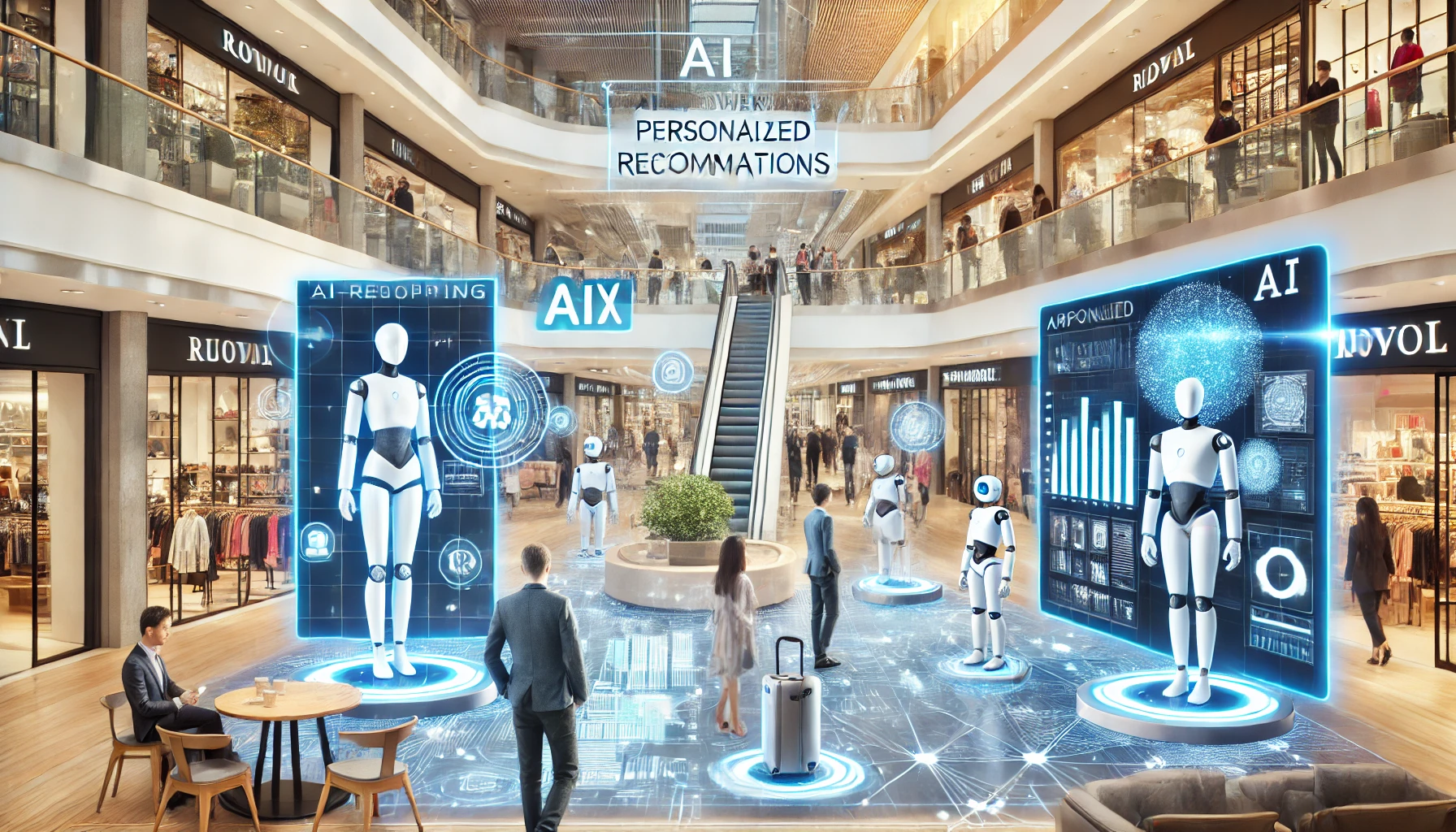Personalized Shopping Experiences
AI is revolutionizing the retail industry by offering highly personalized shopping experiences. Machine learning algorithms analyze customer data, such as browsing history, past purchases, and demographic information, to tailor recommendations and promotions. This personalization increases customer satisfaction and loyalty, as shoppers receive suggestions that are relevant to their tastes and preferences (Semrush) (BrandCurb).
For instance, online retailers like Amazon and Netflix use AI to provide personalized recommendations, ensuring that the products or content shown to users match their interests. Similarly, fashion retailers employ AI to suggest outfits and accessories based on individual style preferences and purchase history (Semrush).
Virtual Assistants and Chatbots
AI-powered virtual assistants and chatbots have revolutionized customer service in the realm of shopping experiences. Their capabilities extend far beyond mere automation; these tools are adept at handling a diverse array of tasks with remarkable efficiency and precision, enhancing the overall customer journey.
One of the primary advantages of AI chatbots in the retail sector is their ability to provide instant responses to customer queries. Whether it’s about product information, order status, or return policies, these virtual assistants can swiftly address customer concerns without the need for human intervention. This real-time assistance significantly improves customer satisfaction and ensures a seamless shopping experience.
Moreover, AI chatbots excel in assisting customers with product searches. By analyzing customer preferences and past interactions, these bots can recommend personalized product suggestions tailored to individual needs and preferences. This level of customization not only saves customers time but also increases the likelihood of making a purchase, driving higher conversion rates for businesses.
In addition to handling inquiries and product searches, AI chatbots play a crucial role in managing orders efficiently. From order placement to tracking shipments, these virtual assistants can guide customers through the entire purchase process, reducing the risk of errors and ensuring timely delivery of products. This streamlined approach not only enhances the overall shopping experience but also alleviates the burden on human customer service representatives, allowing them to focus on more complex issues that require human expertise.
By offering 24/7 support, AI chatbots ensure that customers receive assistance whenever they need it, regardless of the time of day. This round-the-clock availability not only enhances customer satisfaction but also helps businesses establish a reputation for reliable and responsive customer service.
In conclusion, AI-powered virtual assistants and chatbots are invaluable tools in the retail sector, revolutionizing customer service by providing instant responses, personalized recommendations, and efficient order management. By leveraging the power of AI technology, businesses can create a more seamless and engaging shopping experience for their customers.
Retailers like H&M and Sephora have integrated AI chatbots into their online platforms to help customers find products, provide beauty advice, and facilitate easy returns and exchanges. These chatbots use natural language processing (NLP) to understand and respond to customer inquiries, making interactions seamless and efficient (BrandCurb).
Visual Search and Augmented Reality (AR)
Visual search technology allows customers to search for products using images instead of text. AI algorithms analyze the uploaded images to identify products and suggest similar items available for purchase. This technology is particularly useful in fashion and home decor, where customers might want to find items that match a particular style or lookIn addition to improving the shopping experience for customers, visual search technology also benefits businesses by increasing engagement and conversion rates. By providing a more interactive and intuitive way for users to discover products, companies can drive sales and build brand loyalty. As AI continues to advance, visual search capabilities are expected to become even more sophisticated, revolutionizing the way we shop online. (Semrush) (BrandCurb).

Augmented reality (AR) is also transforming the shopping experience by allowing customers to virtually try on products before making a purchase. For example, furniture retailers like IKEA and fashion brands like Warby Parker use AR apps to let customers visualize how products will look in their homes or how glasses will fit on their faces. This interactive experience helps customers make informed decisions and reduces the likelihood of returns (Semrush).
Inventory Management and Supply Chain Optimization
AI is enhancing inventory management and supply chain optimization in the retail sector. Predictive analytics and machine learning models help retailers forecast demand, manage stock levels, and optimize logistics. By analyzing historical sales data, market trends, and external factors like weather and holidays, AI can predict which products will be in demand and ensure they are available when neededThis level of data-driven decision-making not only improves efficiency and reduces costs for retailers but also enhances the overall shopping experience for customers. By leveraging AI technology, retailers can deliver personalized recommendations, offer dynamic pricing strategies, and streamline the fulfillment process. In the competitive retail landscape, harnessing the power of AI in inventory management is becoming essential for staying ahead of the curve. (Semrush) (BrandCurb).

Retail giants like Walmart and Target use AI-driven inventory management systems to streamline their supply chains, reduce costs, and improve efficiency. These systems help retailers maintain optimal stock levels, avoid overstocking or stockouts, and ensure timely delivery of products to customers (Semrush).
Fraud Detection and Security
AI plays a crucial role in detecting and preventing fraud in the retail industry. Machine learning algorithms analyze transaction data to identify suspicious patterns and flag potential fraudulent activities. By continuously learning from new data, these AI systems improve their accuracy in detecting fraud and protecting both retailers and customers (Semrush) (BrandCurb).
Online payment platforms and retailers, such as PayPal and eBay, use AI-based fraud detection systems to monitor transactions in real-time, ensuring secure and safe shopping experiences for their users (BrandCurb).
Conclusion
AI is significantly transforming the retail shopping experience by offering personalized recommendations, enhancing customer service through virtual assistants, enabling visual search and AR, optimizing inventory management, and improving fraud detection. As AI technologies continue to advance, the retail industry will see even more innovative applications that enhance customer satisfaction and streamline operations.
FAQs
1. How is AI used to personalize shopping experiences?
AI personalizes shopping experiences by analyzing customer data, such as browsing history, past purchases, and demographic information, to tailor recommendations and promotions. This increases customer satisfaction and loyalty, as shoppers receive suggestions that match their tastes and preferences. For example, Amazon and Netflix use AI to provide personalized recommendations based on user behavior (Semrush) (BrandCurb).
2. What are some examples of AI-powered virtual assistants and chatbots in retail?
AI-powered virtual assistants and chatbots are used by retailers like H&M and Sephora to assist customers with product searches, provide beauty advice, and manage orders. These tools offer instant responses and 24/7 support, improving the overall shopping experience and reducing the workload on human customer service representatives (Semrush) (BrandCurb).
3. How does visual search technology work in shopping?
Visual search technology allows customers to search for products using images instead of text. AI algorithms analyze the uploaded images to identify products and suggest similar items available for purchase. This technology is particularly useful in fashion and home decor, helping customers find items that match a particular style or look (Semrush) (BrandCurb).
4. What role does AI play in inventory management and supply chain optimization?
AI enhances inventory management and supply chain optimization by using predictive analytics and machine learning models to forecast demand, manage stock levels, and optimize logistics. By analyzing historical sales data, market trends, and external factors, AI can predict which products will be in demand and ensure they are available when needed. Retailers like Walmart and Target use AI-driven systems to streamline their supply chains and improve efficiency (Semrush) (BrandCurb).
